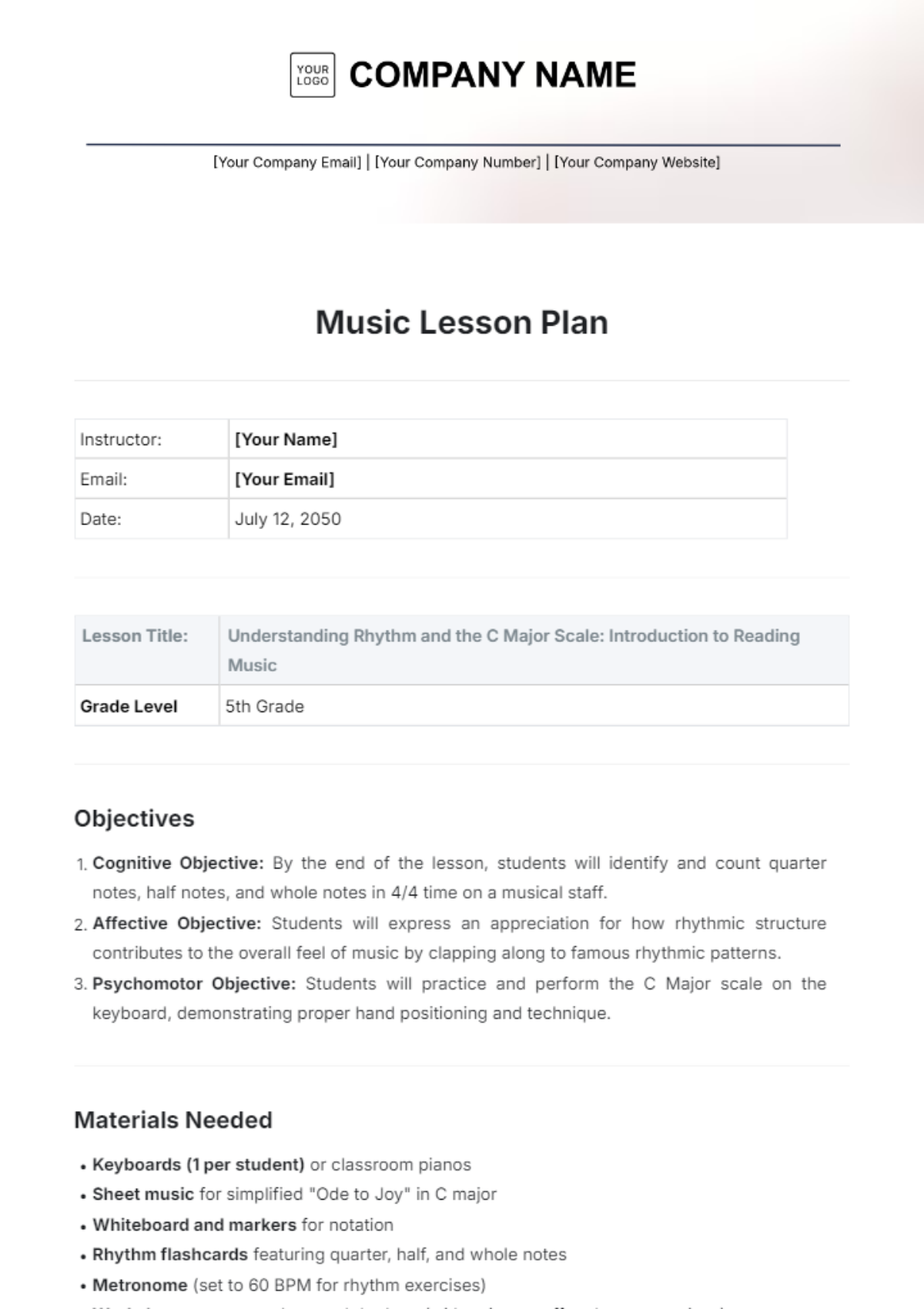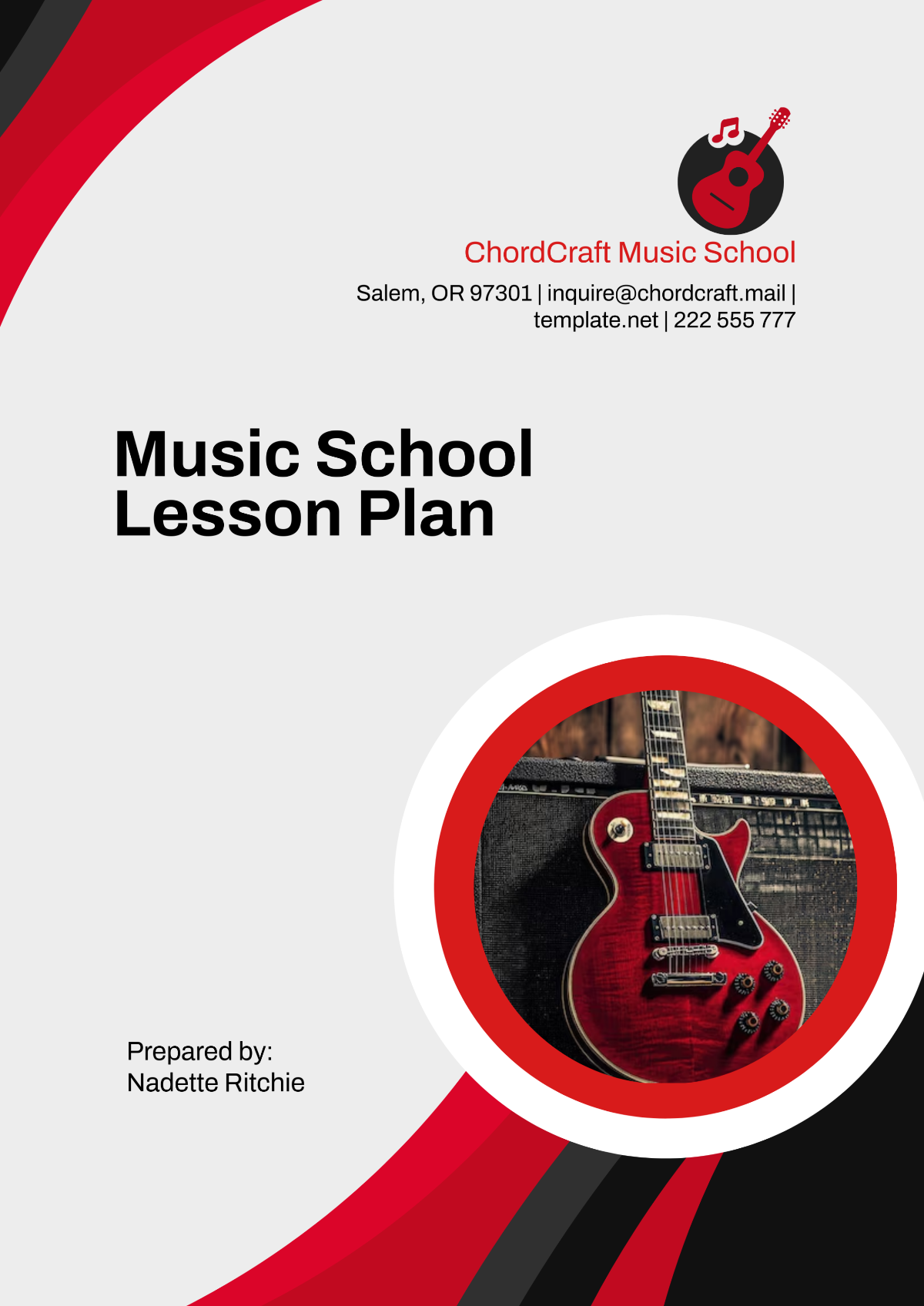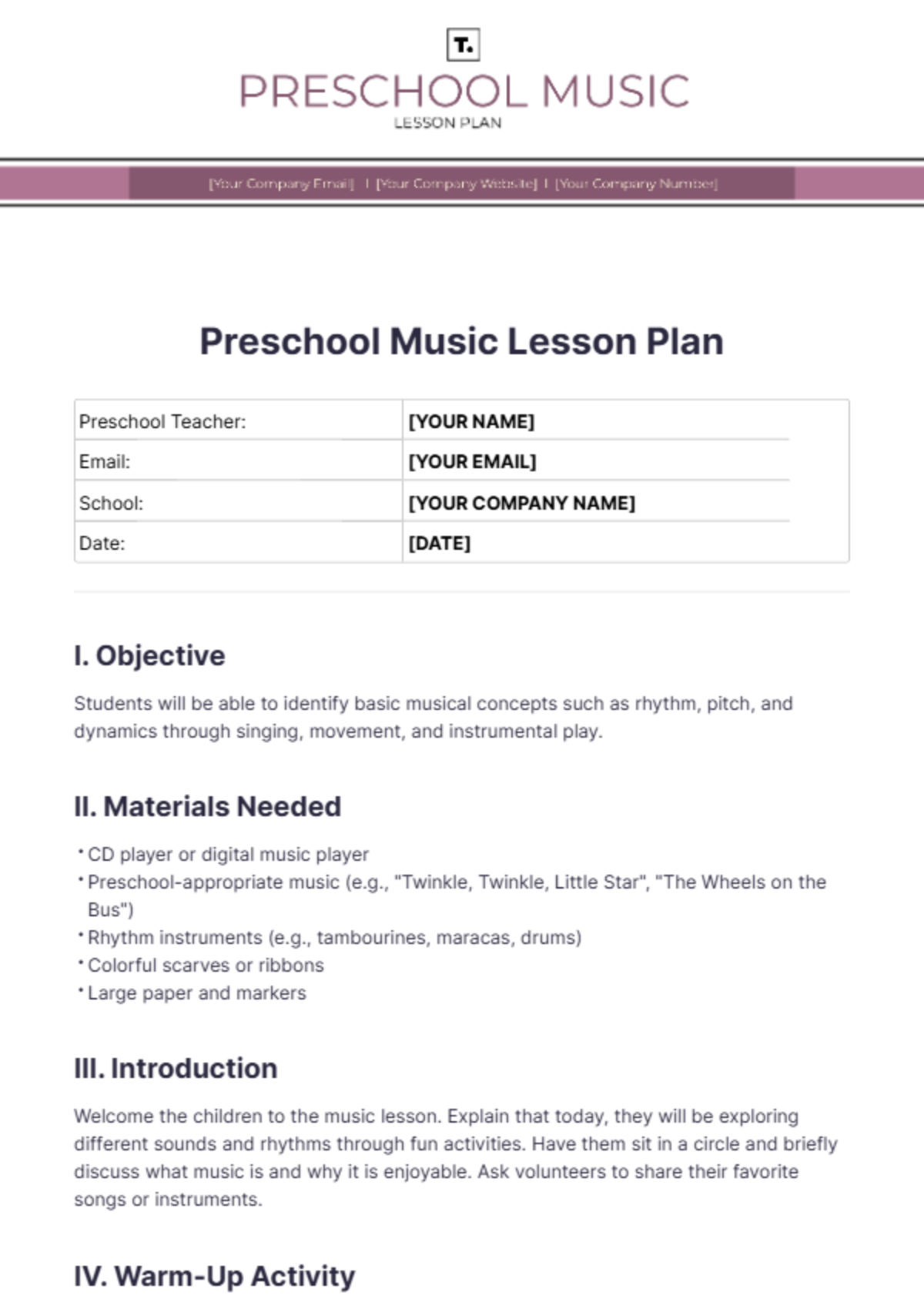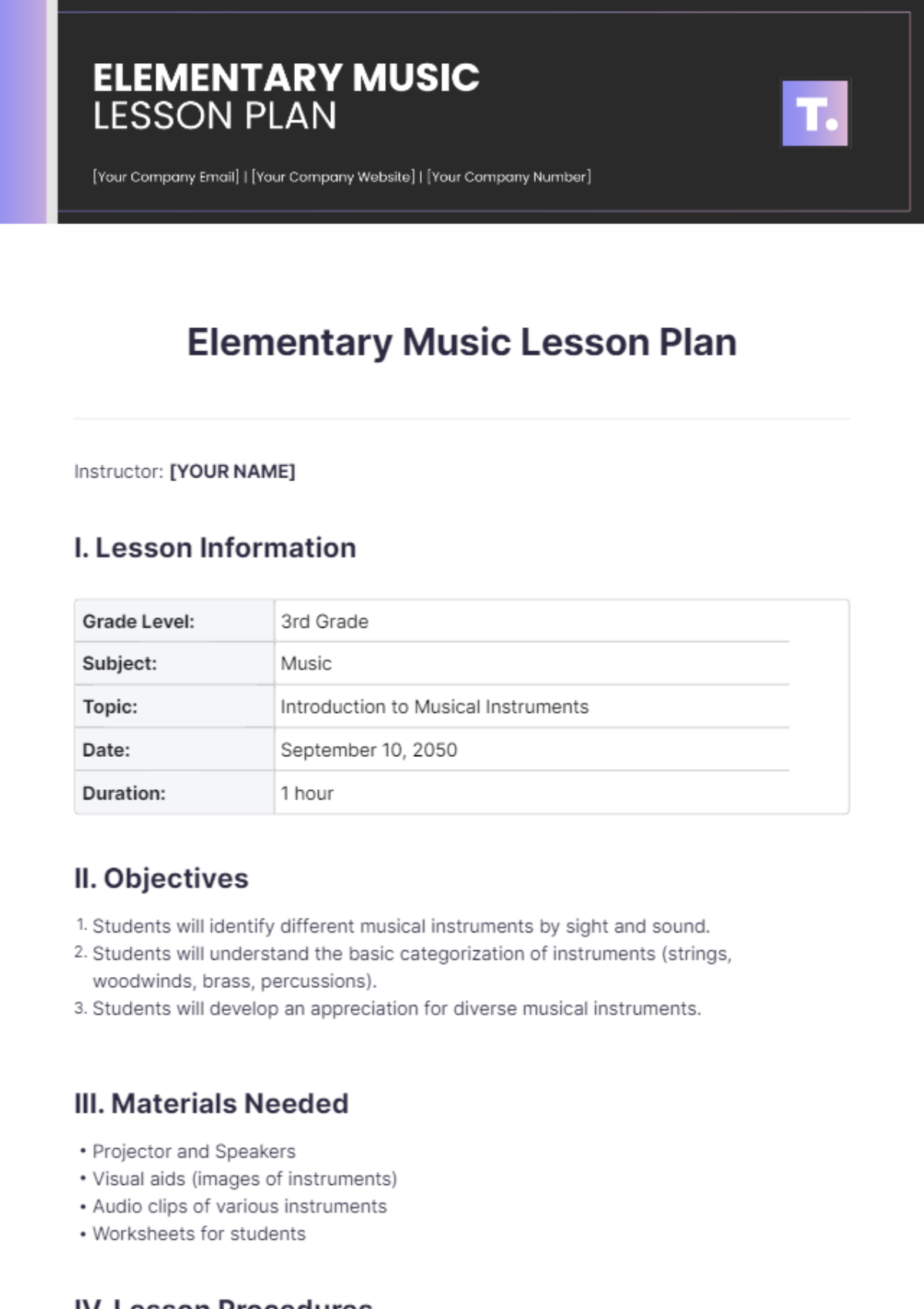Free Music Lesson Plan
Elevate your music teaching game with Template.net's Music Lesson Plan Template. Crafted for versatility, it's both editable and customizable, ensuring seamless adaptation to your unique teaching style. Harness the power of the AI Editable Tool to effortlessly tailor lessons. From rhythm to harmony, this template harmonizes efficiency and creativity, making each lesson a masterpiece.



